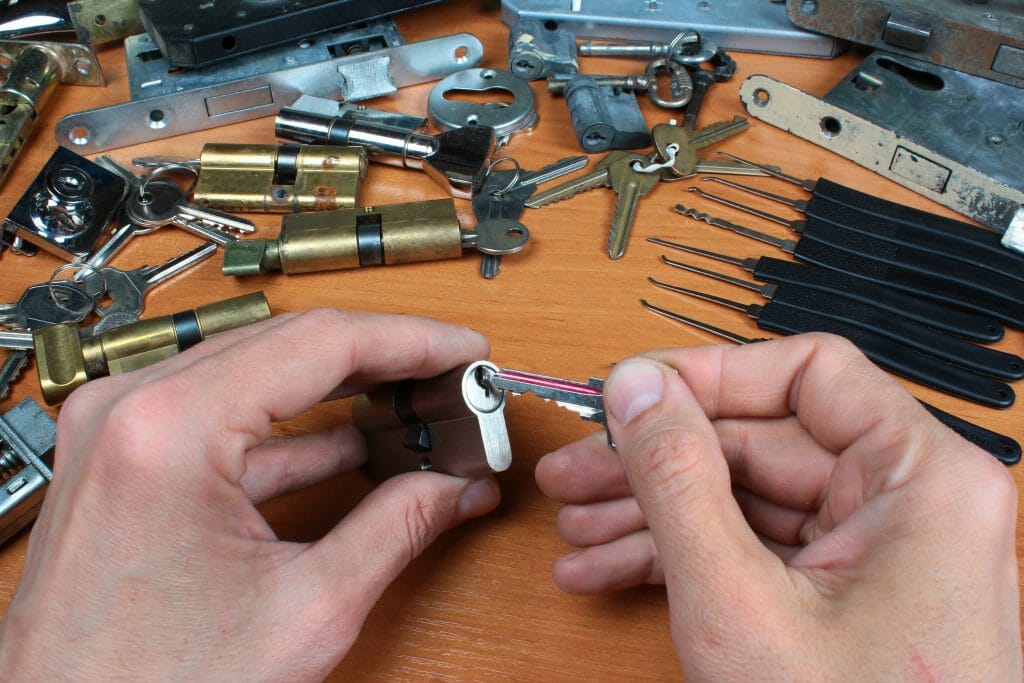Professional locksmiths are skilled technicians who provide crucial services in securing and accessing buildings and vehicles. Their work involves a range of tasks, from installing and repairing locks to helping people who find themselves locked out. To perform these tasks effectively, locksmiths rely on a variety of specialized tools. Understanding the tools used by locksmiths can give you insight into their work and the precision required to handle complex locking mechanisms. For urgent situations requiring immediate assistance, an emergency locksmith in Cincinnati can provide timely help and utilize these tools to resolve lockout scenarios and other critical issues.
Key Cutting Machines
Key-cutting machines are essential tools in a locksmith’s arsenal. These machines are used to cut keys to the exact specifications needed to match a lock. There are several types of key-cutting machines, including manual and electronic versions. Manual key cutters require the locksmith to operate the machine by hand, while electronic key cutters use automated systems to ensure precise cuts. The accuracy of these machines is crucial for ensuring that a new key will work smoothly with the lock it is intended for.
Lock Picks
Lock picks are fundamental tools for locksmiths, especially when dealing with lockouts. These tools allow locksmiths to manipulate the pins inside a lock cylinder to open it without the original key. There are various types of lock picks, each designed for different kinds of locks. For example, hook picks, rake picks, and tension wrenches are commonly used to maneuver the pins and turn the lock cylinder. Using lock picks requires a high level of skill and practice, as it involves understanding the intricate mechanisms inside different types of locks.
Tension Wrenches
Tension wrenches are used in conjunction with lock picks to apply rotational pressure to the lock cylinder. This pressure helps align the pins or tumblers inside the lock so that they can be manipulated by the pick. Tension wrenches come in various shapes and sizes, allowing locksmiths to choose the right tool for the specific type of lock they are working on. The proper application of tension is essential for successfully picking a lock and requires both skill and precision.
Key Extractors
Key extractors are tools used to remove broken keys from locks. When a key breaks off inside a lock, it can prevent the lock from operating properly. Key extractors are designed to grasp and pull out the broken key fragments without damaging the lock. These tools typically feature fine, pointed ends that can engage with the broken key, making it possible to extract it safely. Effective use of key extractors can save time and avoid the need for lock replacement.
Lock Drills
Lock drills are used in situations where other methods of entry are not feasible. Drilling is often used to bypass locks that cannot be opened by traditional means. Locksmiths use specialized drills and bits to create a hole in the lock cylinder, allowing them to access the internal components and open the lock. Drilling is typically a last resort, as it can damage the lock and may require replacement. However, when done correctly, it allows locksmiths to gain entry in emergency situations.
Plug Spinners
Plug spinners are tools used to rotate a lock cylinder after it has been picked. Sometimes, a lock can be picked but not turned, either because the pins are not fully aligned or because the lock cylinder needs additional manipulation. Plug spinners help address this issue by applying a quick rotational force to the lock cylinder, facilitating the turning of the lock and allowing it to open. Using a plug spinner requires skill and precision, as it involves timing and the correct application of force.
Electronic Lock Tools
As locking technology evolves, locksmiths have adapted to new tools designed for electronic and smart locks. These tools include devices for programming electronic locks, accessing codes, and troubleshooting issues with digital locking systems. For instance, locksmiths might use key programming tools to create new electronic keys or to reprogram existing ones. These tools help locksmiths work with advanced security systems and provide solutions for modern locking mechanisms.
Cylinder Removal Tools
Cylinder removal tools are used to extract lock cylinders from their housings, particularly when a lock needs to be repaired or replaced. These tools are designed to safely remove the cylinder without causing damage to the door or the surrounding hardware. Proper removal of the cylinder is crucial for ensuring that the lock can be serviced or replaced effectively.
Lubricants and Cleaning Agents
Lubricants and cleaning agents are essential for maintaining and servicing locks. Lubricants help ensure that lock mechanisms operate smoothly and prevent issues such as sticking or jamming. Cleaning agents are used to remove dirt, debris, and other contaminants that can affect the performance of a lock. Regular maintenance with these products helps extend the life of locks and ensures reliable operation.
Conclusion
Professional locksmiths utilize a diverse set of tools to perform their tasks efficiently and effectively. From key cutting machines and lock picks to electronic lock tools and lubricants, each tool serves a specific purpose in ensuring that locks are installed, repaired, and accessed correctly. Understanding the tools used by locksmiths provides insight into the complexity and skill involved in their work. Whether dealing with traditional mechanical locks or modern electronic systems, locksmiths rely on these specialized tools to provide the highest level of service and security.
